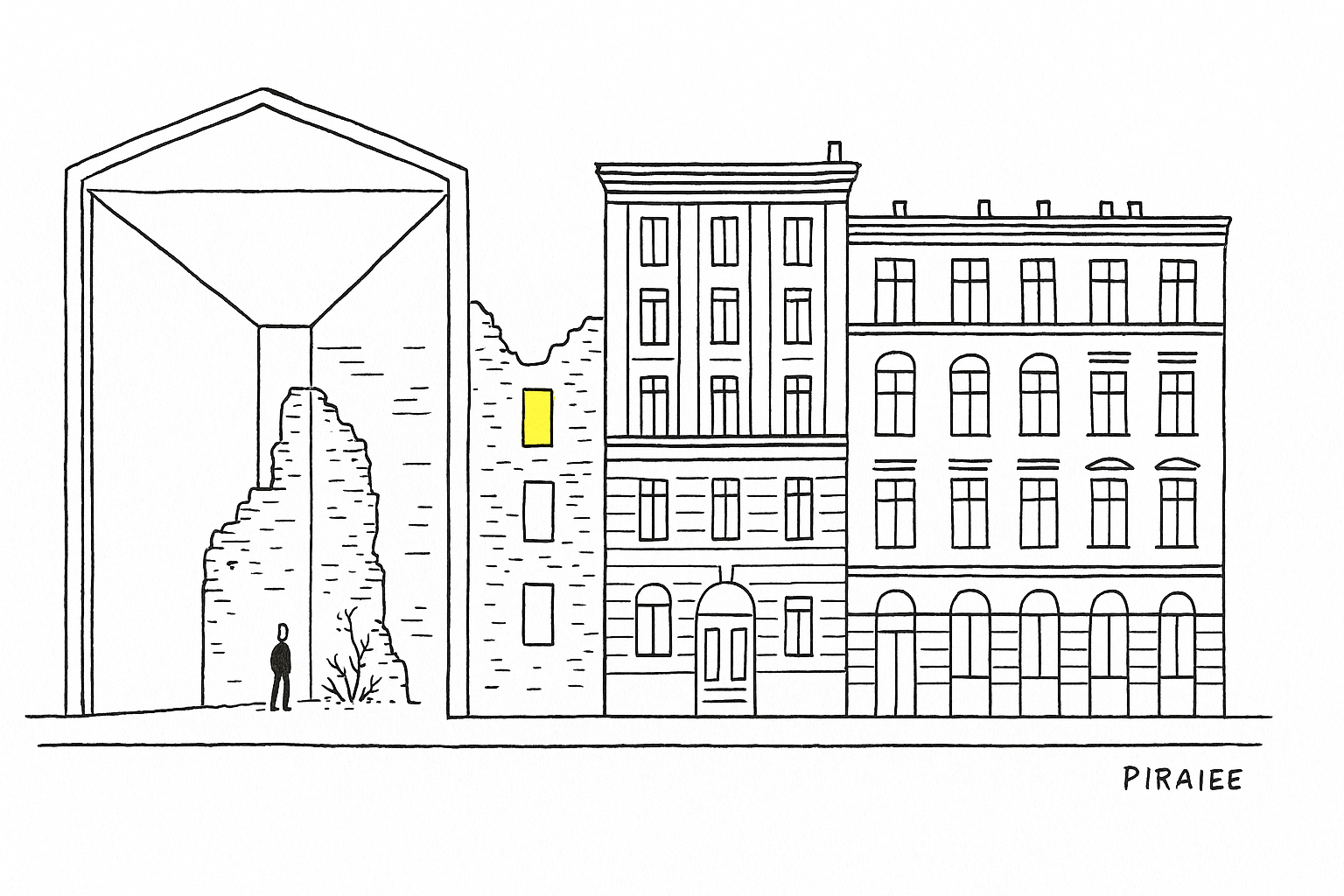A Place That Remembers: Revitalization Concept for Waliców
“There is no longer a Jewish district in Warsaw.”
These chilling words were written by Jürgen Stroop to Heinrich Himmler following the brutal suppression of the Warsaw Ghetto Uprising and the orchestrated demolition of the Great Synagogue—carried out to the sound of a German military orchestra in 1943.
“But it continues to exist—in memory, in names, in the scars of the city.”
Before the devastation of World War II, Warsaw was home to the largest Jewish community in Europe—and second only to New York globally. In the 1930s, approximately 350,000 Jews lived in Warsaw, making up about 30% of the city’s population. Jewish life was not confined to a single district but flourished especially in Muranów, Nalewki Street, Grzybów, and the area surrounding Waliców. These neighborhoods were vibrant with religious, cultural, intellectual, and economic life: synagogues, yeshivas, publishing houses, cafes, theaters, and schools.
Subscribe to Startup Digest to stay ahead with the latest news, investments, and must-attend events.
The Jewish districts of Warsaw were not ghettos by design but living, evolving parts of the city. Jewish and non-Jewish residents often coexisted in dense urban quarters. These areas were the epicenter of a dynamic Jewish culture that produced writers, activists, and entrepreneurs who left a lasting mark on Poland and the world.
That cultural richness came to a halt with the Nazi invasion in 1939. By 1940, the occupiers had established the Warsaw Ghetto, sealing over 400,000 Jews behind walls in unbearable conditions. The area around Waliców Street fell within the boundaries of the ghetto. Most of its buildings were either destroyed in the Warsaw Ghetto Uprising or abandoned in the years that followed. Today, little remains of what was once the heartbeat of Jewish Warsaw—except fragments of walls and fractured memories embedded in brick and silence.
It is in this exact space, where history is carved into the ruins, that Grupa 5 Architekci’ architectural intervention begins.
The Architectural Response
Grupa 5 Architekci studio has proposed significantly revitalizing three ruined tenement buildings at Waliców 10, 12, and 14—structures that once stood in the heart of the pre-war Jewish district. This is not simply a reconstruction. It is a gesture of architectural memory.
Rather than fully rebuilding the war-torn façades, their concept preserves the scars. Fragments of Waliców 14’s brickwork will remain exposed, their raw condition serving as a witness to the past. These remnants will not be overwritten but gently sheltered by a symbolic canopy—a roof that provides protection without closure, allowing the story to remain visible.
The space beneath this canopy will become an exhibition venue for the Auschwitz-Birkenau Foundation, whose headquarters will be housed in the restored portions of the complex. Modern architectural elements—transparent, minimal, and restrained—have been intentionally set apart from the historical fabric, creating a visible dialogue between the old and the new, between what was lost and what must be remembered.
“This design embodies a simple but urgent truth: we do not build over memory—we build around it.” Grupa 5 Architekci
A City’s Memory, Reawakened
“Warsaw has always been a city of survival, reinvention, and remembrance. With this project, we seek to contribute to the collective architecture of memory—to honor not only what was destroyed but also what once thrived. In preserving the ruins of Waliców, we preserve the story of Warsaw’s Jewish soul: not erased, but engraved in walls, names, and the enduring spirit of the city.” Grupa 5 Architekci
A place that remembers.
A place that teaches.
A place that lives.




